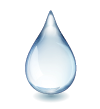About Wellington Dam
Wellington Dam is the second largest surface water catchment in Western Australia (behind the Ord River Dam).¹
It is located in the Collie River catchment (or the ‘Upper Collie Surface Water Area’) over the Darling Range to the east of the Collie River Irrigation District (CRID). The district is located in the South West region of Western Australia, approximately 200 kilometres south of Perth and east of Bunbury.
It is the largest catchment in the South West at 2,509 square kilometres (excluding the Harris Dam catchment as Harris Dam seldom overflows).
Originally constructed in 1933, and enlarged in 1956, Wellington Dam was upgraded in 2012 to meet current Australian engineering standards, and holds 185 billion litres when full. However, unlike other dams in the region, its allocation is not fully utilised due to the salinity of the water and its impact on crop growth.
The water in Wellington Dam is not drinking water quality due to high salinity and bromide, and because it is subject to the risk of contamination from recreational activities in the dam’s water body, runoff from local towns, and industrial and farming activities within the catchment. From the dam, 85.1 billion litres of water has been allocated2, of which 68 billion litres is for irrigation in the Collie River Irrigation District (which is managed by Harvey Water). Other water licences include industry and local uses. In addition, approximately 28 billion litres of water is used via scour releases for environmental water provisions.
Climate change impacts of reduced rainfall, and corresponding reduction in mean annual inflow, have seen Wellington Dam catchment inflows fall from a long-term average of 124 billion litres per year (based on 1975 to 1999 data) to 78 billion litres per year (based on 2001 to 2012 data). Using modelling based on CSIRO’s predicted median rainfall reductions, it is estimated that the average Wellington Dam inflow could further reduce to 52 billion litres in 2030 and 28 billion litres in 2060.
Wellington Dam originally captured the fresh waters of the east and south branches of the Collie River, the Bingham River and the Harris River. With increasing salinisation of Wellington Dam, the Harris dam was constructed and in 1990 commissioned as the source of potable water for the Great Southern Towns Water Supply System (GSTWSS). This left the Wellington Dam as a ‘fit for purpose’ source for agriculture and industrial users. However, the increased salinity of the water in the dam severely limits the fitness of this source for these purposes.
Current Situation
The State Government committed in 2013 that Wellington Dam would be a strategic source solely for industry, agriculture and recreation. It has now been decommissioned as a drinking water source. Consistent with government policy, Wellington Dam will not be used for public drinking water supply in the future, and therefore it is not being considered as part of the future drinking water supply options in the South West.¹
As the main dam infrastructure management entity in the state, Water Corporation is still involved in maintaining Wellington Dam into the future.
As the primary allocation holder for dam water, Harvey Water has long been concerned at the salinity in Wellington Dam and the impact this has on the farmers and irrigators who rely on this water source and in turn on the outlook for agricultural production in the region. Salinity has risen from 300 mg/L TDS to more than 1100 mg/L TDS (peaking well above this level in dry periods) diminishing its value as an agricultural resource. As a result, some farmers in the Collie River Irrigation District have handed back their entitlements ² and are choosing not to irrigate because of the potential risk of soil degradation and the impact on production.
Unlike irrigators in the adjacent Harvey and Waroona irrigation districts where pressurised water is delivered through a pipe network, farmers in the Collie River Irrigation District are locked into outdated and inefficient flood irrigation and cannot effectively rotate paddocks.
A number of solutions have in the past been considered by the private and public sectors. This has culminated with Collie Water, in partnership with government, leading engineering expertise and a wide range of local stakeholders, advancing previous research to develop a commercially viable, holistic solution to reduce salinity and improve distribution across the region.
References:
¹ Water Corporation, Wellington Dam, South West information sheet, November 2013
² Upper Collie Allocation Plan, 2009, http://www.water.wa.gov.au/PublicationStore/first/77328.pdf

SIZE
Wellington Dam was constructed in 1933 and is the largest reservoir in WA’s south west, with a wall measuring 366 metres across and 34 metres high.

SALINITY
Due to the increased salinity in the Wellington Dam, it was abandoned as a drinking water source in 1990.

USAGE
Wellington Dam water is now solely provided for agriculture and industry, but less than 20% of its 185GL of water is currently utilised.